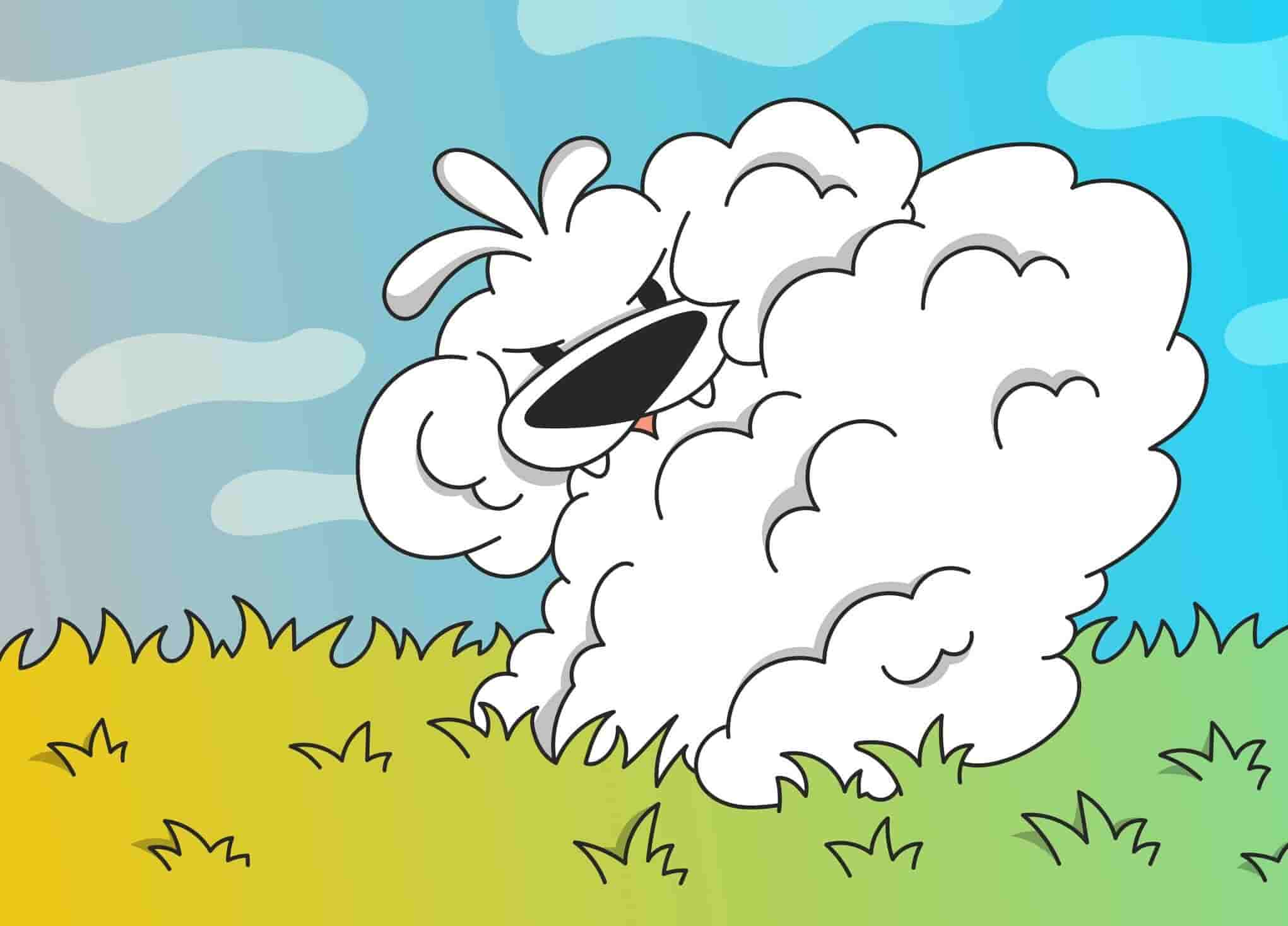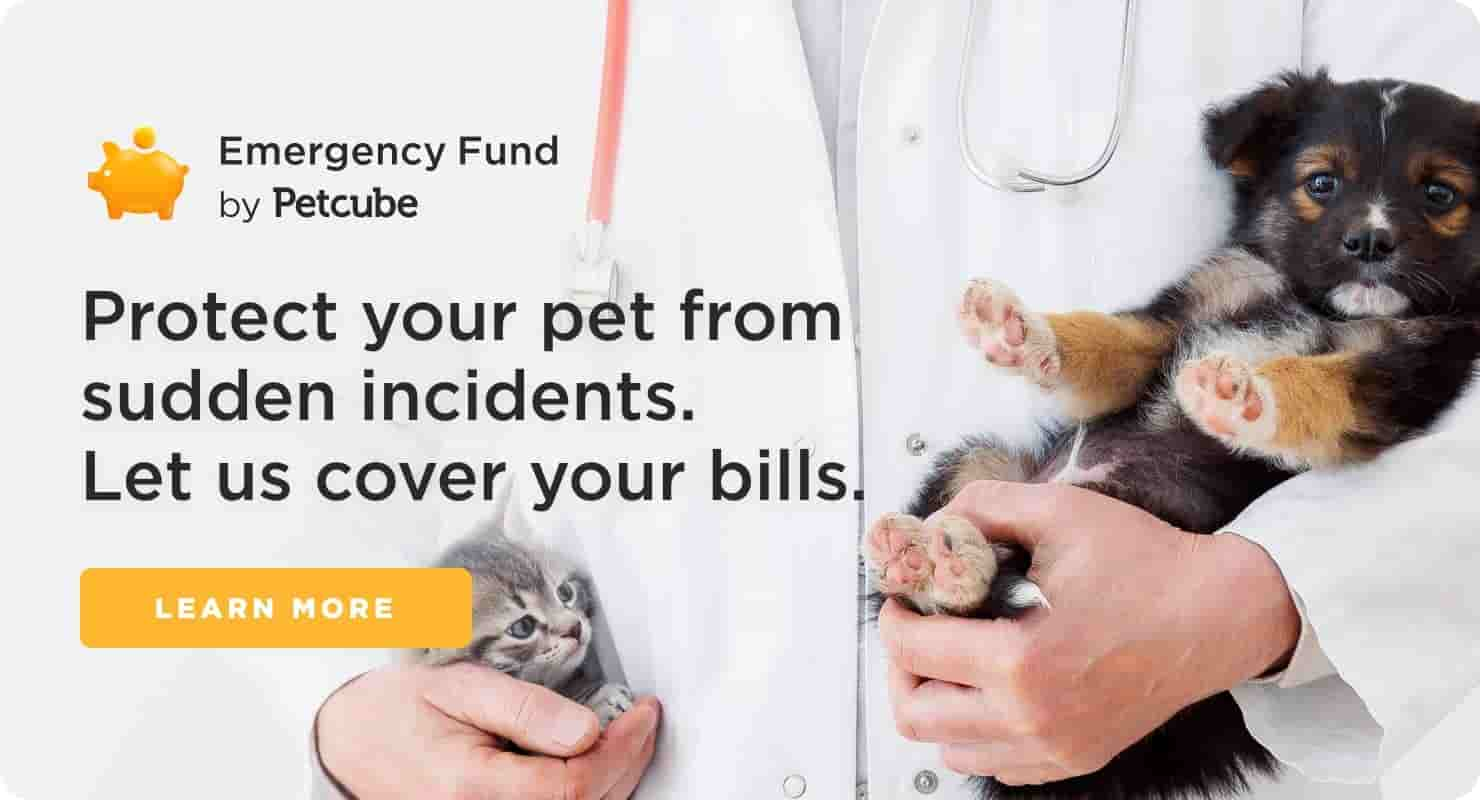Just the mention of fleas is enough to make most people itch. As a pooch parent, fleas are one of the most feared elements of being a dog mom or dad. Not just because they torment your beloved companion, but because they can go from a handful of annoying individual fleas to a full-blown infestation within days.
This article was reviewed by Dr. Chris Vanderhoof (DMV).
What do fleas look like on dogs?
First off, it’s imperative to know the enemy. What do fleas look like? Fleas are small insects, usually brown or dark copper in color. They’re about the size of the head of a pin.
Finding a flea can be tricky. These insects are lightning-fast – there one second, gone the next. How do fleas get around? While fleas can’t fly, they can jump, and each jump can carry them a significant distance compared to their size.
When fleas aren’t springing off, you can find them crawling around on your dog’s skin. But to see them like this, you’ll need to search in hard-to-reach places on your pup. Fleas aren’t fond of light, so they hang out in the dark and hidden areas on your dog’s belly and inner thighs.
Chances are pretty good that you won’t spot the flea itself. But a good indicator that your dog has some unwelcome passengers on board is to look out for ‘flea dirt’ (aka flea poop).
Dog flea dirt resembles dark dust, almost like pepper. Pick some off and place it on a wet paper towel. If the specks spread out like a bloodstain – you can take that as confirmation that your pet has fleas.
How does a dog get fleas?
As much as you’d like to avoid it, your dog will pick up fleas at some point in their lives. Dogs pick up fleas in many ways:
1. From other animals
Dogs are curious and social animals. In their encounters with other animals, they risk catching fleas. Fleas don’t only live on pets but can also be contracted from wildlife in the area, including squirrels, deer, rabbits, raccoons, rodents, and, most rarely, birds.
Wherever your dog roams or plays present the potential for fleas. That could be in your garden, at the park, or on your daily walk.
2. From their home
Ok, this one makes our skin crawl, but fleas can come into your home in various ways – not just on your dog. These crafty critters can hitch a ride on human clothes or even visit animals – we’re not just talking about your friend’s handbag chihuahua. Mice nesting in and around your home can introduce fleas into your sanctuary.
Don’t be fooled into thinking that one flea isn’t an issue. You found one flea, but it only takes a single female to lay up to 40 eggs a day, according to research. Infestations can happen in the blink of an eye.
3. Animal facilities
The groomers, doggy daycare, and pet motels all harbor the potential to pass on fleas. You risk exposing your pooch to fleas wherever animals are found.
4. Outdoors
The fleas that live on your cat and dog are generally adult fleas that usually don’t roam freely outside as they need to live on their host to survive. They will lay their eggs in warm, safe places, not necessarily on your pet.
Wherever your dog goes, they risk picking up flea eggs, larvae, and pupae, waiting for a suitable host to wander past.
Signs my dog has fleas
Spotting flea dirt on your dog is a sure sign that your dog has fleas. Since fleas themselves are so hard to spot, here’s how to know if your dog has fleas:
- Scratching: as you’d expect, a dog with fleas will scratch. Flea bites and the crawly presence of these insects will cause your dog to itch, resulting in scratching and gnawing at the affected areas.
- Hair loss: Excessive scratching and grooming can lead to hair loss. Hair loss related to fleas usually occurs on the back of the legs and around the base of the tail.
- Irritated skin: inflamed and irritated skin can occur with a flea infestation. In particular, this can indicate a possible flea allergy.
- Pale gums: a severe infestation can lead to anemia, resulting in very pale-looking gums. This is very rare in adult dogs; it is something to keep an eye out for in puppies with severe infestations.
Treating fleas
Of course, like most things, prevention is better than cure. By the time you notice the fleas, they’ve already started to set up shop and lay eggs. Speedy reactions are necessary if you wish to prevent a more severe infestation.
1. Bath
A bath can go a long way in getting fleas off your dog. A simple wash in warm water or mild soap can do the trick. Consider how your dog reacts to baths. If they really don’t enjoy a bath, it may not be worth the trauma to you or your dog.
Dog flea shampoos will kill fleas on your dog, which you can remove from their fur using a fine-tooth flea comb. Remember that these shampoos don’t offer lasting protection. They are simply the first line of defense in killing present fleas.
2. Comb
A dog flea comb is a valuable tool in tackling these fast-flitting fleas. Use these combs after a flea-shampoo bath or without. In this latter instance, dip the comb into a mixture of water and dish soap to help catch these critters before they have a chance to jump away.
Combs can also help get rid of flea dirt and any eggs present.
3. Kill the fleas
If the comb weeds out one of these pesky parasites, dunk the comb into hot soapy water to kill the flea. Move fast, or you will allow the critter a chance to get away.
4. Treat your pet against future infestations
Chat to your vet if you’re unsure which product to use to prevent fleas from colonizing your canine. They will assess your dog’s level of risk and any particular needs and recommend the best solution.
5. Treat your house
If your dog has fleas, chances are fleas are lurking throughout your home. Take action by vacuuming regularly, periodically washing your pet’s bedding using the hottest setting possible, and drying on high heat to kill any eggs and larvae.
Deter any potential wildlife that could be bringing pests to your door.
Flea emergency cases
Can fleas make a dog sick? In some cases, yes. If you spot any of the following symptoms, you should make an appointment to have your pup checked out:
- Unexplained weight loss;
- Excessive scooting;
- Your pet is lethargic;
- Pale gums;
- You see tapeworm segments in your dog’s stool (these resemble a grain of rice or a cucumber seed).
Flea allergy dermatitis results from an allergy to flea saliva and can result in excessive biting and scratching, which, in turn, can lead to skin infections and painful sores.
Severe infestations can cause blood loss from the number of bites, resulting in amenia.
Fleas can transmit tapeworm infection to your dog if your dog eats a flea carrying tapeworm eggs. Tapeworms can cause nutritional deficiencies and weight loss.
Online Vet & Emergency Fund
In cases when you’re not sure if you need to visit the vet, it can be helpful to have someone to ask. Petcube’s Online Vet service offers just that. You’ll have a team of qualified veterinarians available to you 24/7, and they can help put your mind at ease.
Read more: What To Expect From An Online Vet Visit
Hop on your phone and send a quick text message to one of the online vets, attach a photo or a video, and get a reply in real-time, all for just $20 a month.
For an added $9 a month, you can add on an emergency fund which will pay out up to $3000 a year for emergency vet care.
FAQ
What do I do if my dog has fleas and sleeps in my bed?
Act fast! In addition to treating your dog for fleas, you’ll need to be rigorous with cleaning your bedding. Wash your sheets using the hottest setting. Dry them using the hottest setting or in the sun to kill off any potential eggs. Thoroughly vacuum your mattress.
What do flea eggs look like on a dog?
Flea eggs are off-white and oval-shaped. They are about the size of a grain of salt.
How to find fleas on a dog?
You’ll need to part your dog’s fur to get a good look at their skin. Places commonly harboring fleas include the area at the base of the tail and the inner thighs.
How soon can I give my dog another flea treatment?
This will depend on the product you used. Make sure to follow the instructions for the product. If you’re still finding live fleas two weeks after treatment, consult your vet, who will advise the best course of action.
Dog dandruff or flea eggs?
Flea eggs look like grains of salt. Dandruff resembles flakes. Flea eggs don’t tend to stick to fur and fall out quite easily. Dandruff is stickier and clings to the hair.

Was this article helpful?
Help us make our articles even better










